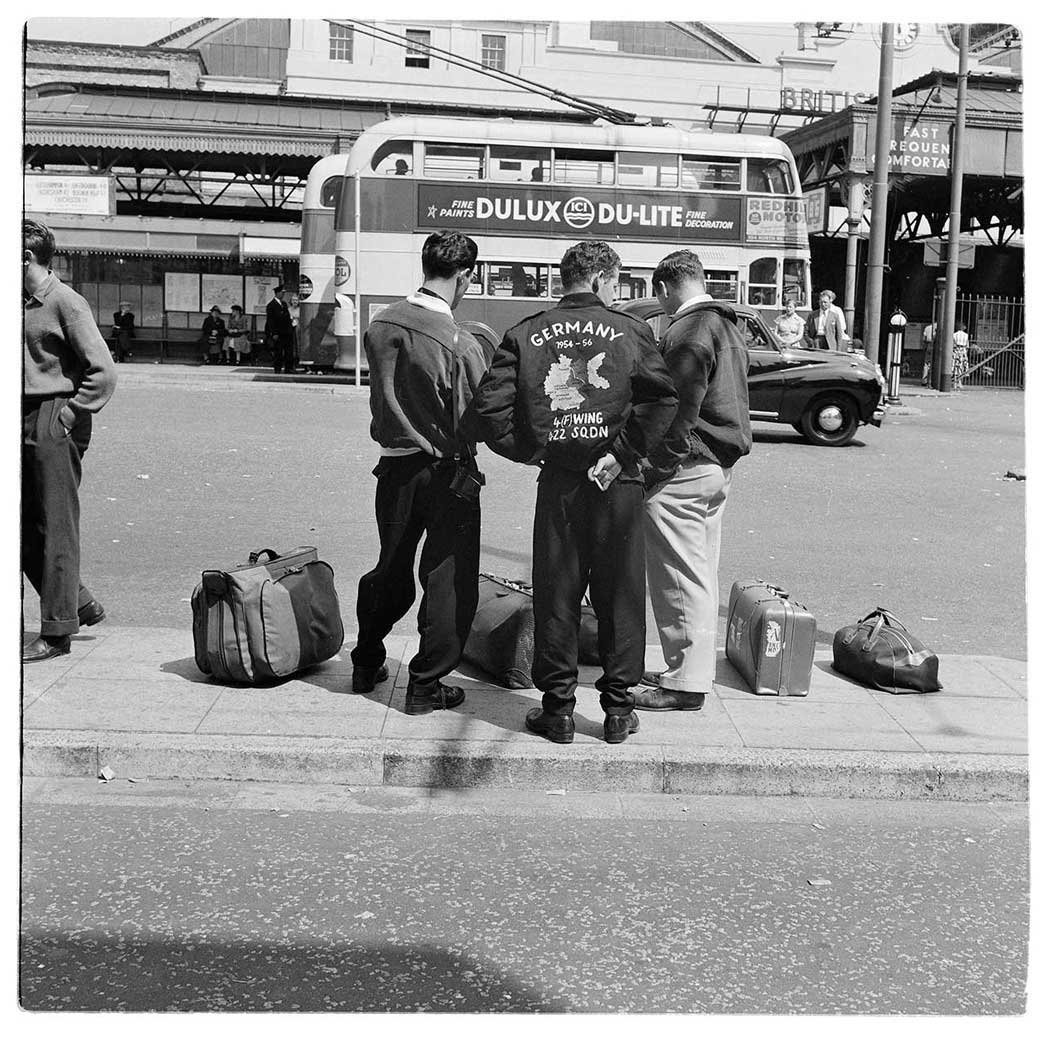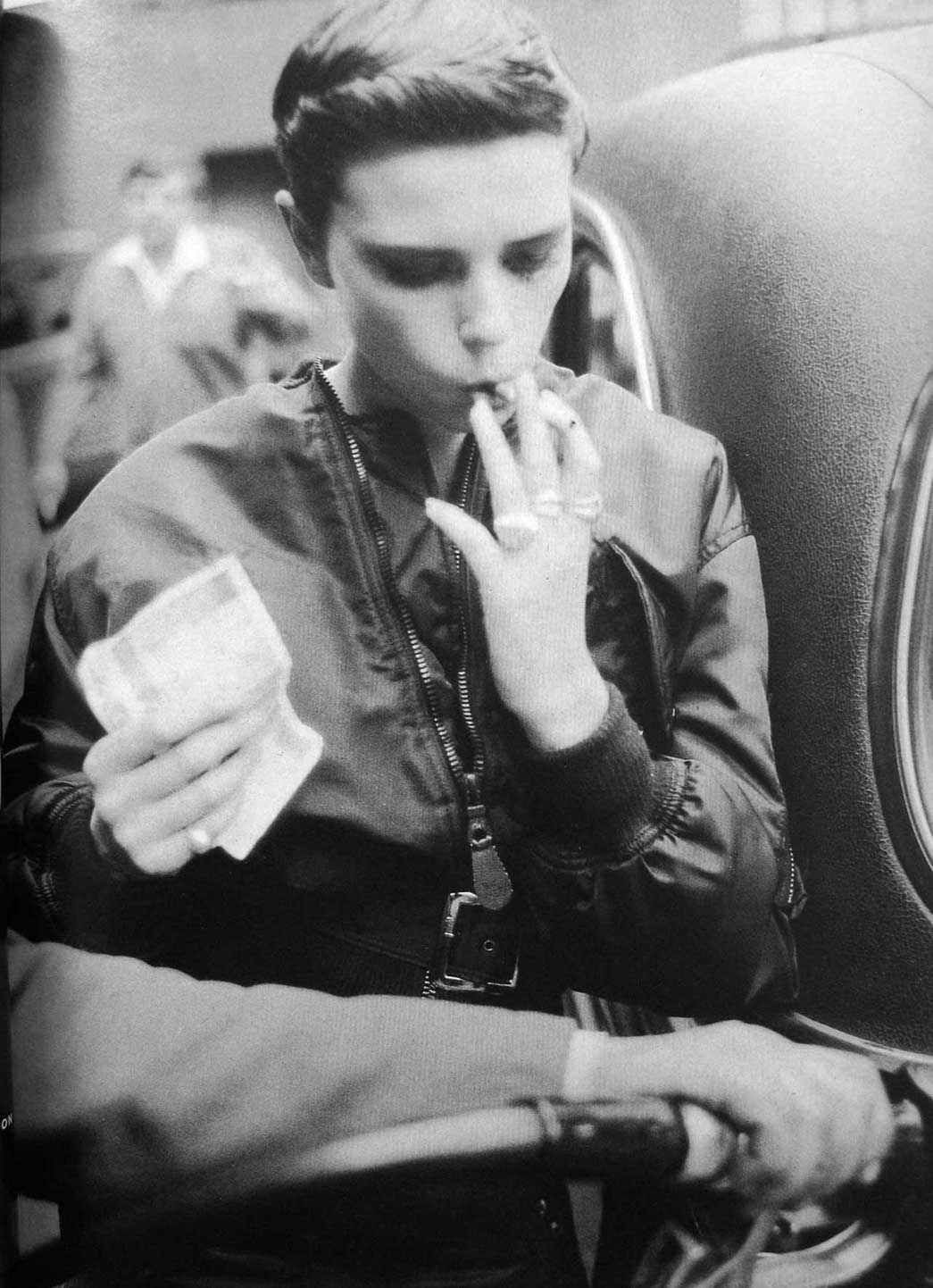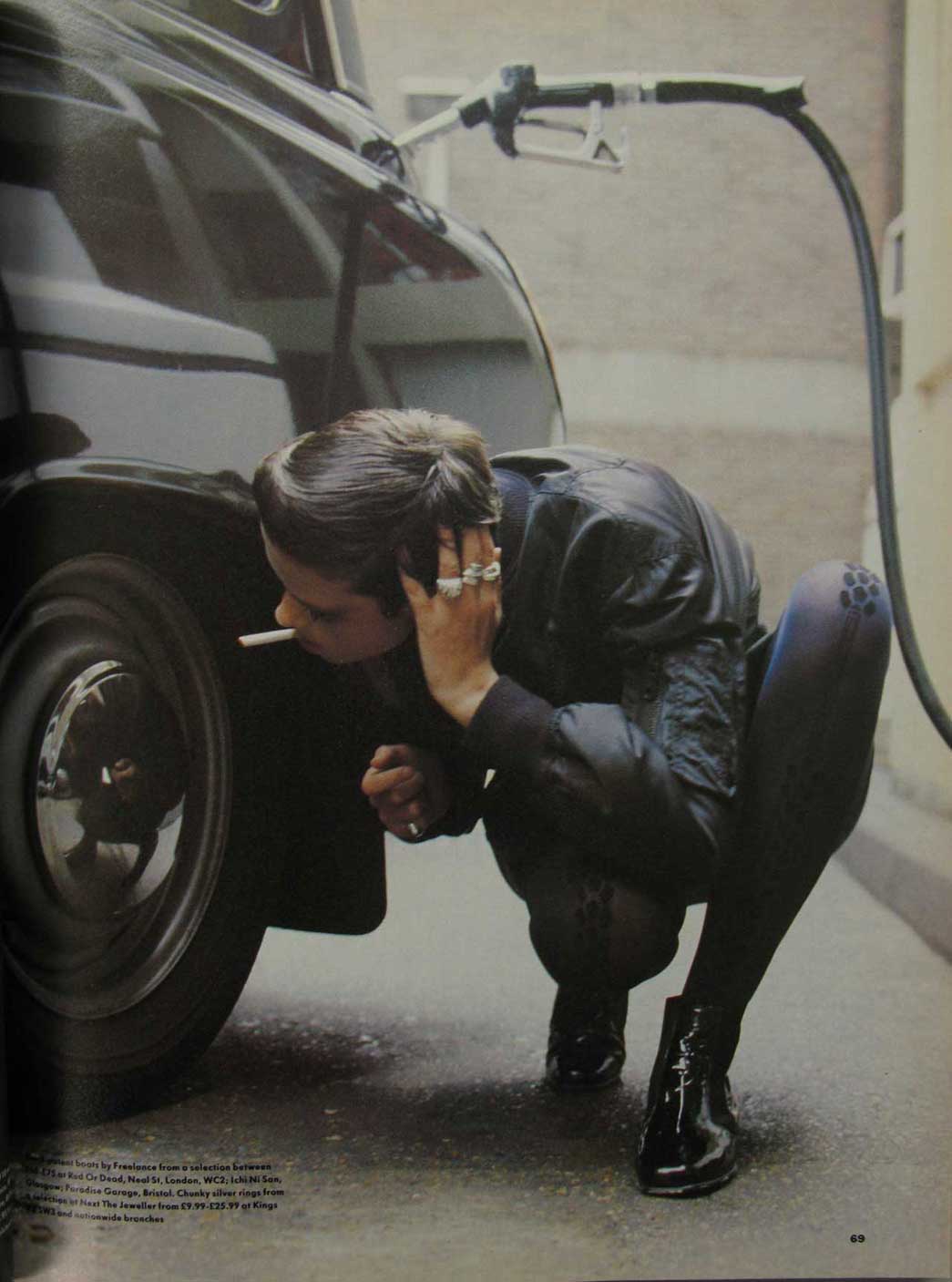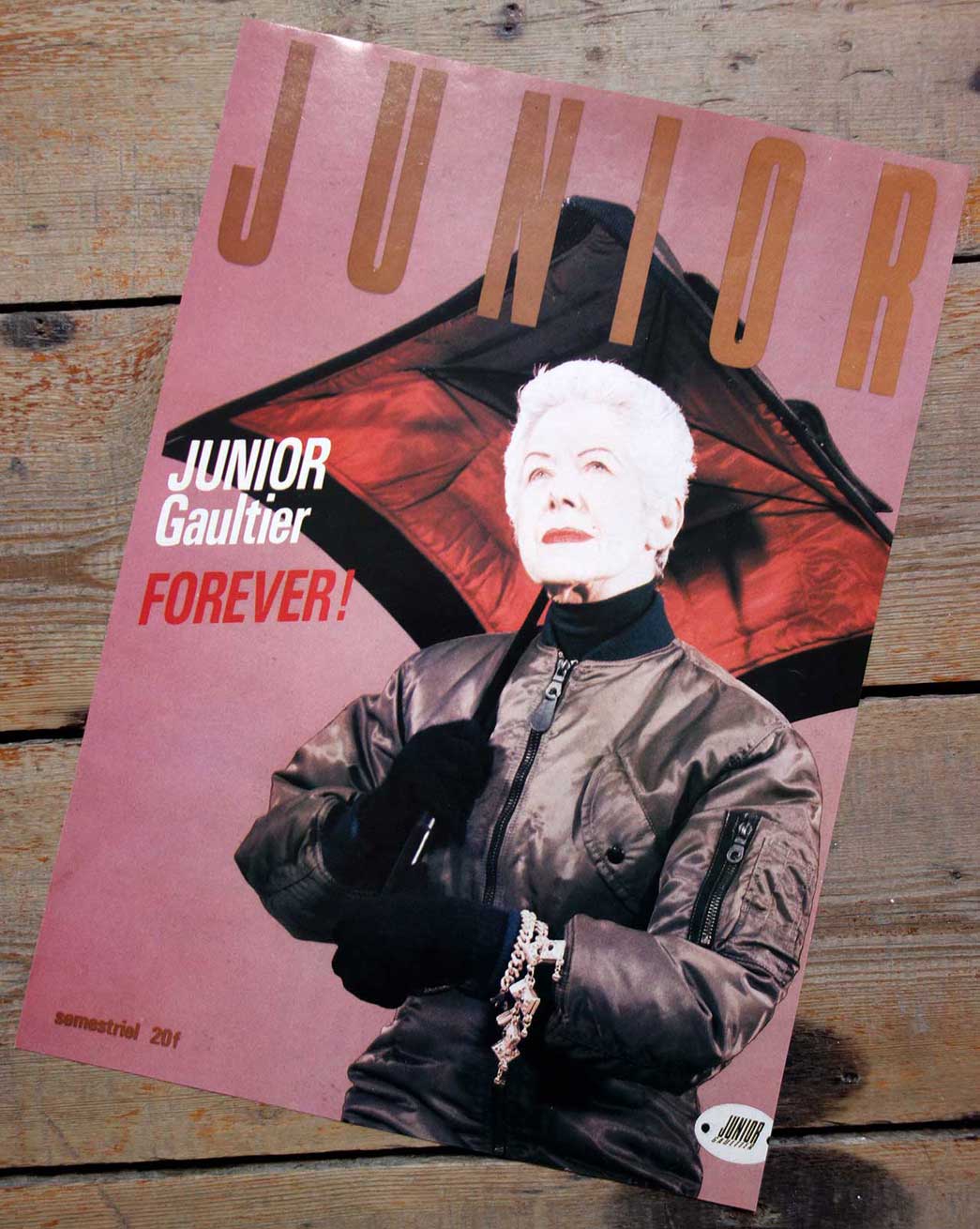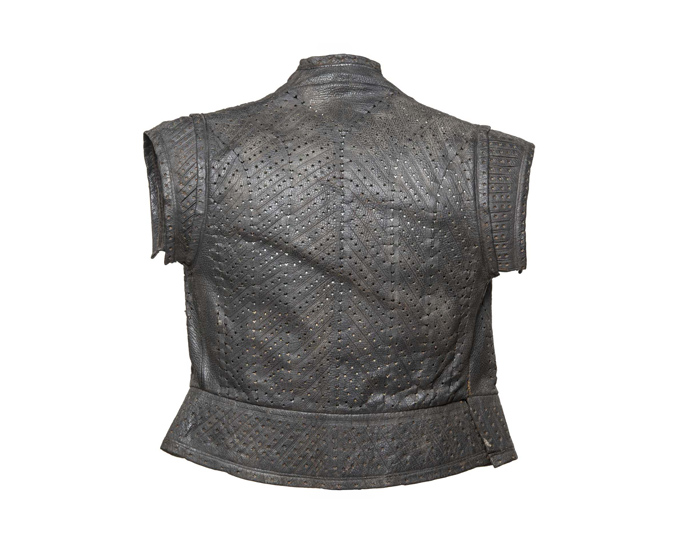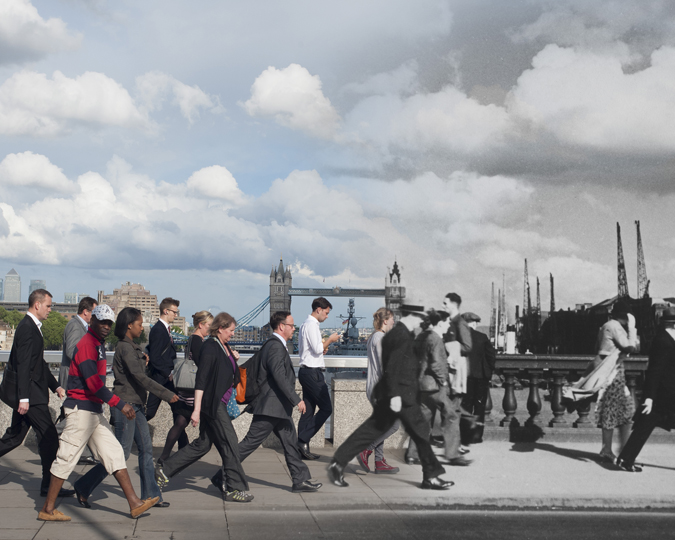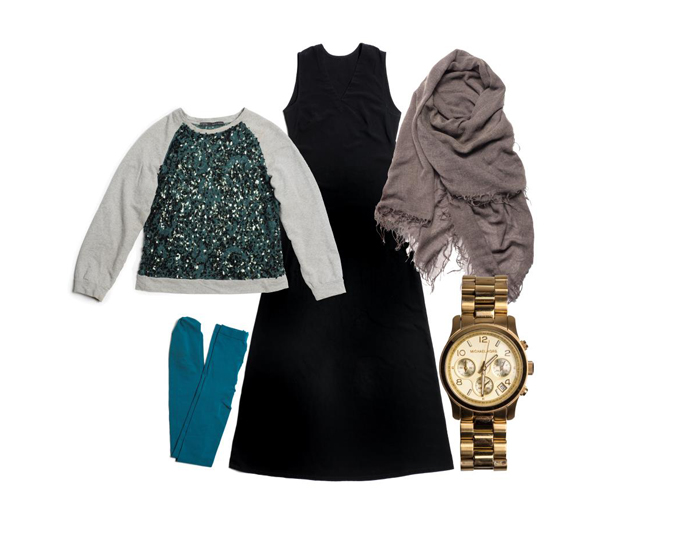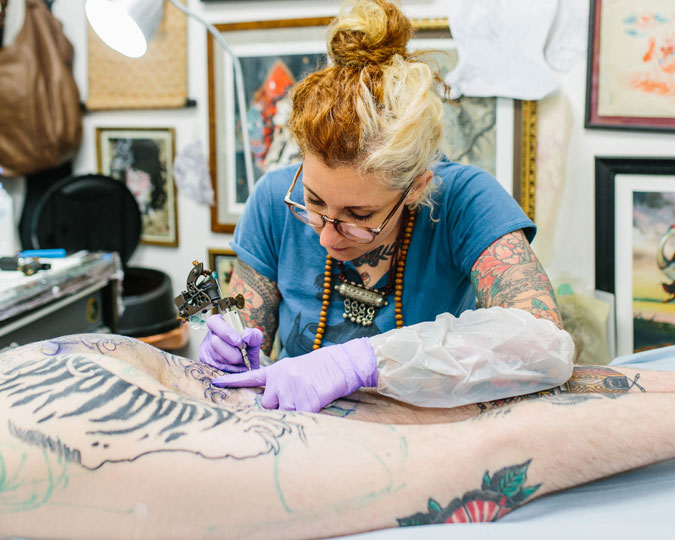A few weeks ago I found myself surrounded by fascists. I was on my way to the West End when at Tower Hill station a large group of French-speaking men with assorted girlfriends and wives (I presume) entered my tube carriage.
Most if not all of the men wore black bomber jackets with embroidered patches on their sleeves. Even if I had not known about the neo-Nazi rally that was supposed to take place in London the following day, the black uniform and the Gothic scrip on the patches and half-hidden T-shirts were a bit of a giveaway. The group was very jolly and seemed to have enjoyed their pre-rally spot of sightseeing.
This disconcerting fascist encounter was made even more memorable by the fact that I blended right in, wearing my own black bomber jacket (albeit without patches embroidered with ‘B&H’). Not for the first time, I began to contemplate my relationship with Le Bomber. We are having a long-standing affair: my present Topshop number had replaced a similar black nylon blouson, albeit with a deep waistband, that I had purchased for £50 and had nursed through five or more winters, carefully mending and de-bobbling whenever required (breaking up is hard to do for me and my clothes). When I recently saw how frequently bomber jackets appeared on London Fashion Week’s and other catwalks, I thought it was time to have another good look at this polysemic (oh yes!) object.
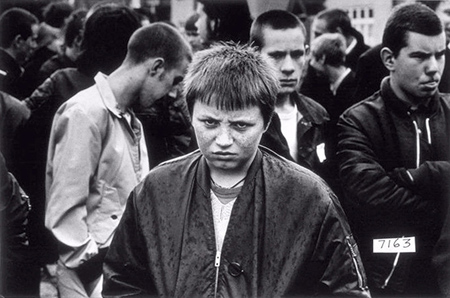
Jim Rice, British Movement, Welling, Kent, 1980 (© Jim Rice WWW.LONDONPHOTO.CO.UK)
Much has been written by more knowledgeable folk about the development of the flying jacket (see links at the end), its use in male fashion and by Hollywood. I am most interested in the bomber’s appropriation by girls and will therefore restrict myself to the basics. Early aviation jackets were made of leather but during World War II there apparently was a need for something warmer and less bulky. The first incarnation of the bomber as we know it seems to be the MA-1 which began to be issued to US military at the end of the 1950s. Made of sage-green or blue nylon, a later incarnation could be worn inside out so that the ‘blaze orange’ or ‘international orange’ lining could alert rescue missions to stranded pilots. Alpha Industries claim that the MA-1 was made almost exclusively by them, but then they would say that, wouldn’t they? If you want to see how best to team a bomber jacket with a tight dress, have a look at Marilyn Monroe who does just that in 1954.
We do not have a flying/bomber jacket in the collection so I was looking through our Historic Photographs instead. The earliest image I could find which seemed to show something related is this photo by Bob Collins, probably from the late 1950s.
According to our database it shows three travellers at Victoria Station, but the eagle-eyed among you will have noticed that we are actually talking Brighton. The embroidery on the back of the jacket does not look super-professional, but I might be wrong in my assumption.
No. 422 Squadron was a Royal Canadian Air Force unit, which, according to this website, ‘joined No. 4 (Fighter) Wing at Baden-Soellingen’ in south-west Germany in August 1953. I wonder whether the young man wearing the jacket had been stationed in Germany between 1954 and 1956 as his jacket proclaims or whether this had been a present. The three men do look a bit un-English but I cannot quite put my finger on why I think that. The hair, the trousers, the stance?
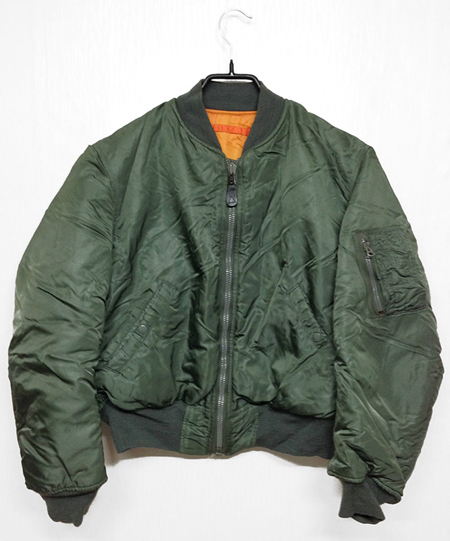
Alpha Industries bomber jacket, via Ebay
In 1977 Alpha launched the CWU-36/P for summer and the CWU-45/P for winter which are still in use. Made of ‘Nomex’ the jackets have a turn-down collar rather than the knit standing collar of the MA-1, which has always been my own personal favourite. The orange lining has been abandoned and the pockets are different, among other changes. According to Alpha Industries’ website, it was in the mid-1970s that ‘surplus jackets’ (at that point still the MA-1) began to be sold through Army Navy stores to ‘the public’. The word surplus is slightly misleading, I think, as it seems Alpha made ever so slightly different jackets for ‘commercial customers’ which were distinguished by three lines in the label. I wonder whether the particular date of the jackets dissemination to non-army people had anything to do with the end of the Vietnam War in 1975. You can still buy MA-1s worn in Vietnam on ebay, as seen here.
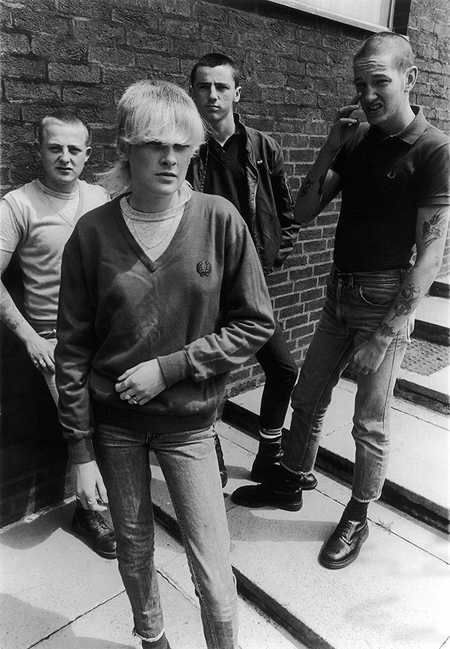
Dick Scott-Stewart, A group of skinheads pose for the camera, c. 1980 (© Dick Scott-Stewart Archive)
This seems the right moment to mention skinheads, which I am doing somewhat reluctantly as their history is rather complicated and I am bound to get it wrong. As Robert Elms writes in his sartorial biography The Way We Wore: ‘Unlike the genesis of mod, the start of the skinhead era is little documented or debated’ (p. 59). Following his account (there might have been different trajectories depending on where you lived) ‘peanuts’, the name of the earliest type of skins, began to appear in the late 1960s. They picked elements from Mod – predominantly the neat- and sharpness – and mixed it with some stuff of their own. Rather than a flying jacket, the self-respecting skin seems to have hankered after a Crombie or a Harrington jacket and also at some point a jean jacket. I have the feeling the MA-1 only entered the skinhead sartorial repertoire in the late 1970s. It is not mentioned in Resistance through Rituals published in 1975, nor in the bible: Dick Hebdige’s Subculture: The Meaning of Style form 1979. One of the skins in Dick Scott-Stewart’s photo below from around 1980 seems to wear a type of bomber jacket although probably not an MA-1.
Much, much more could be said about skinheads and bomber jackets but, maybe frivolously, I want to get back to what prompted this post. When did women start adopting the bomber? Tight-fitting, short, blouson-style nylon jackets were of course one feature of the late 1970s, worn by men and women alike. But they are not really bombers. If my own experience, living in Germany, is anything to go by, bomber (and varsity) jackets gained popularity more generally among teenagers around 1979/80. Not many girls in my school were wearing them and my mother would have been horrified had she known I was secretly craving a blue or aubergine number (much prefer green these days). The jacket was supposed to be worn big and meant to look as if you had borrowed it from your boyfriend. No wonder Petra had a bomber jacket and my chances of ever getting hold of one were pretty slim.
The second time I was dead keen on a bomber was in the early 1990s. I was occasionally allowed to wear the green MA-1 (or copy) belonging to a flatmate’s boyfriend, whether with or without his consent or knowledge I cannot remember, but I never bought my own. I still thought that ideally it should be worn in by someone else and be slightly too large. By this time, bombers had entered high fashion, due to Jean-Paul Gaultier.
You can see it worn here in one of my all-time favourite fashion spreads showing Alex Arts in a variety of ‘work’ situations in the 100th issue of The Face. According to the caption, you could have got Alex’s ‘Gaultier Junior cropped MA1-style jacket’ for £110 at Whistles with a matching skirt thrown in for another £95, a lot of money in 1988.
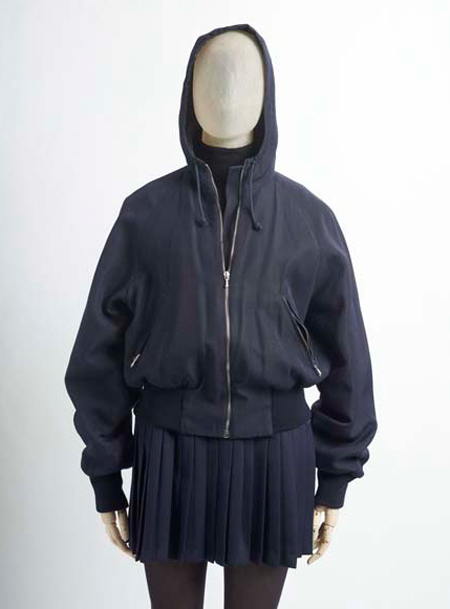
Katharine Hamnett, Blouson and Mini-Skirt, early 1990s?
While the Museum of London does not own an MA-1 (hint, hint) we did acquire a Katharine Hamnett bomber-ish jacket with a hoody, which I have yet to accurately date. I had first thought late 1980s but I now believe early 1990s is more likely. I would have loved to have worn the entire outfit, black roll neck sweater, Wolford tights, Shelley ankle boots and all. (From the most recent crop I most like Mario Schwab’s offering, although it is maybe a tad literal.)
I did not want to end there but rather with a clipping which I have kept faithfully for the last 25 years. It is a 1988 Junior Gaultier advertisement featuring not only a beautiful bomber but also a fabulous model.
Further Reading
Robert Elms, The Way We Wore: A Life in Threads (Picador 2005)
Stuart Hall and Tony Jefferson (eds), Resistance through Rituals: Youth Subcultures in Post-War Britain (Hutchinson 1976)
Dick Hebdige, Subculture: The Meaning of Style (Routledge 1979)
Links to pages about bomber jackets
Buzz Rickson Products
Mr Porter, ‘The Classics: The Bomber Jacket’, 7 February 2012
The History of the Bomber Jacket on French Truckers
History of the MA-1 on Third Looks
Chris Sullivan on the history of the bomber jacket
AnOther on the Aviator
Love fashion? Subscribe to our free fashion newsletter to read more stories from our collections, and see upcoming events and exhibitions.








